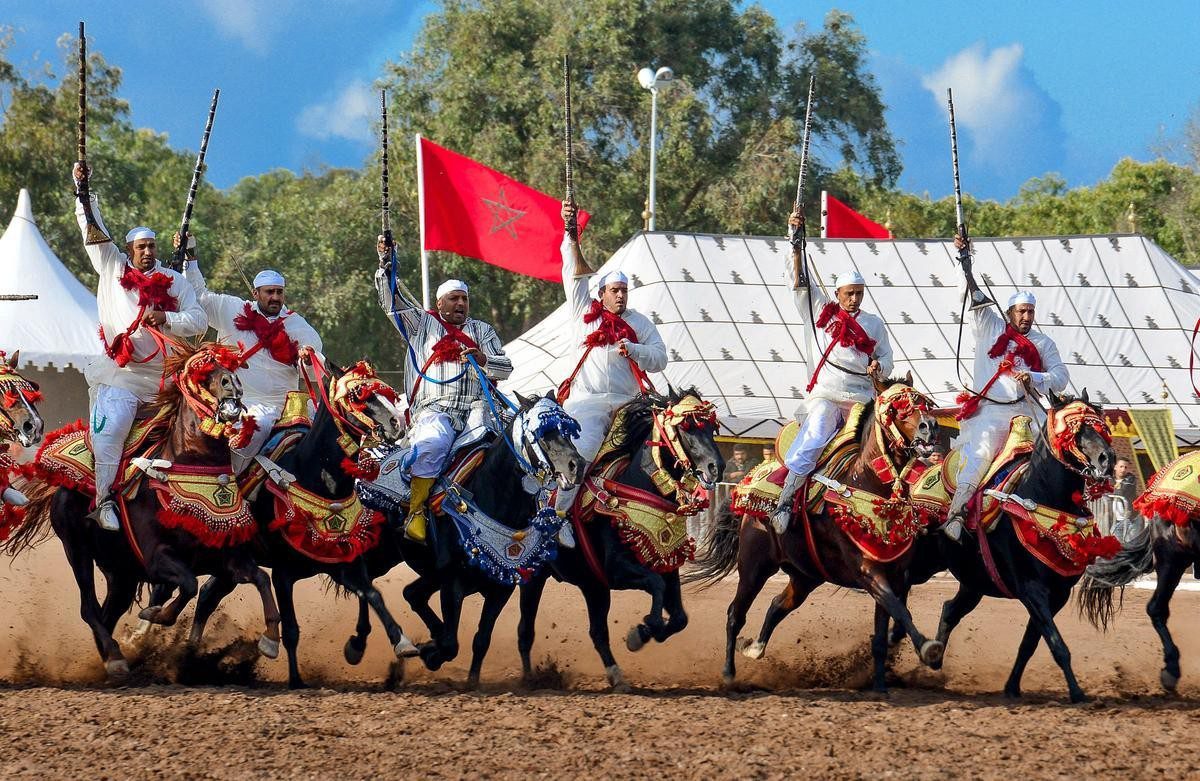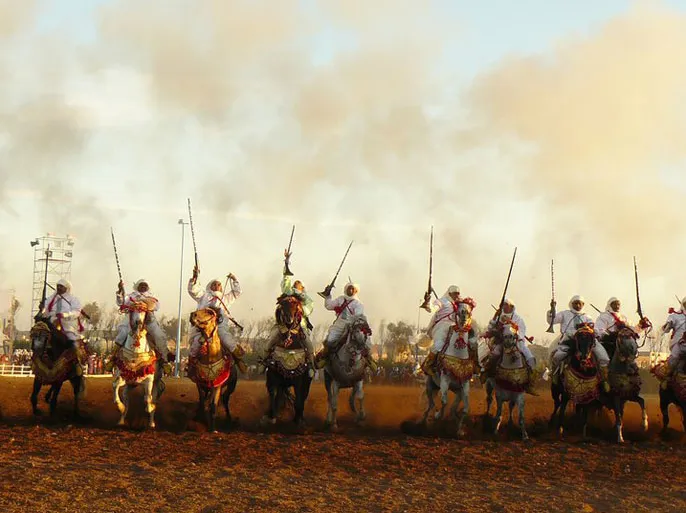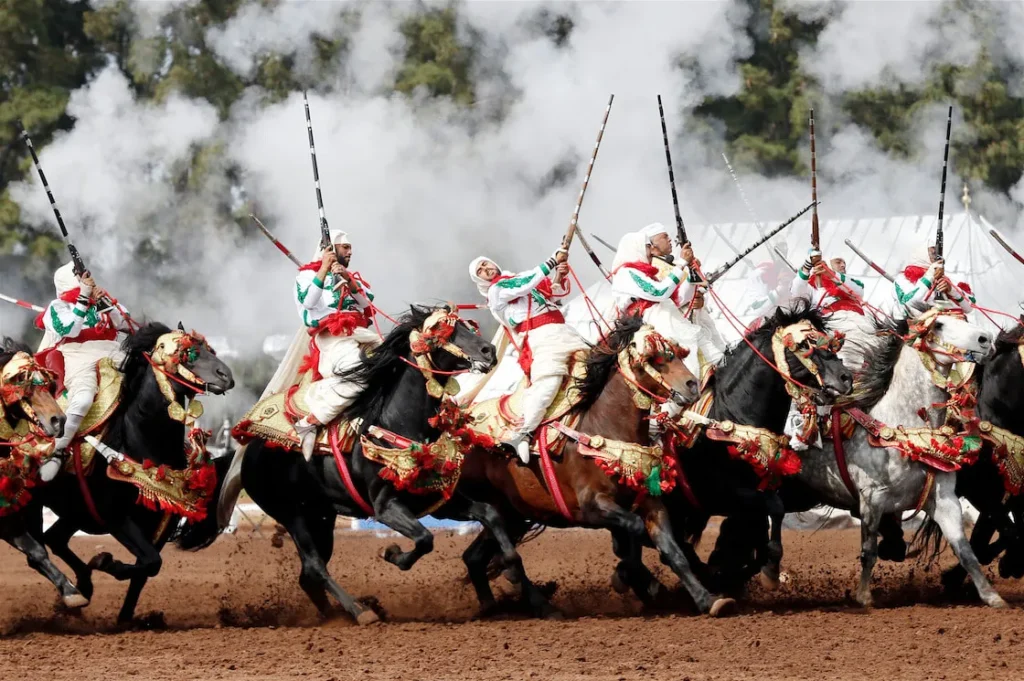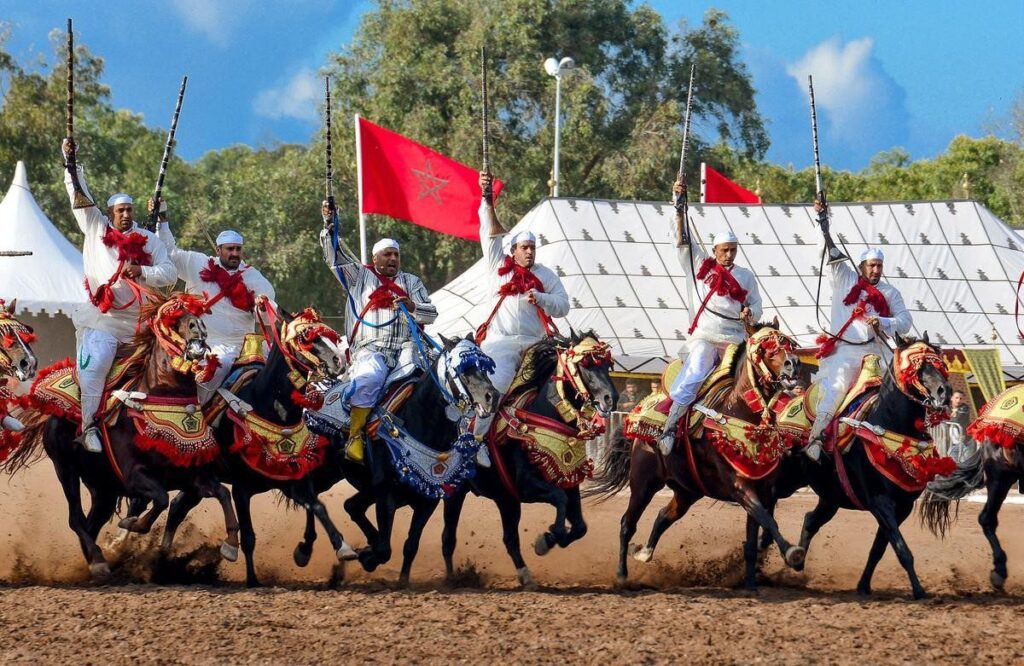Tbourida Moroccan Heritage

Tbourida: A Timeless Moroccan Equestrian Heritage
Tbourida, also known as “La Fantasia” by some, is an exceptional equestrian art that has been proudly preserved and celebrated in Morocco for centuries. Rooted deeply in the culture and traditions of the Moroccan people, Tbourida represents a rich and vibrant aspect of the kingdom’s intangible heritage, encapsulating values of honor, bravery, and communal pride.

Historical Origins of Tbourida
The origins of Tbourida can be traced back to the 15th century, making it a cornerstone of Moroccan culture for over five centuries. The name “Tbourida” is derived from “Baroud,” referring to gunpowder, which plays a central role in the performance. Historically, this equestrian art simulated military parades and battlefield maneuvers, serving as a visual representation of the courage and discipline required during times of conflict. Over the years, it evolved into a ceremonial and celebratory practice that remains an integral part of Moroccan traditions.
The Rituals and Symbolism of Tbourida
A Tbourida performance is more than just a spectacle; it is a carefully choreographed ritual imbued with deep symbolism. A troop, known as a “Sorba,” typically consists of 15 to 25 riders led by the “Mokaddem,” or chief. The riders, dressed in traditional Moroccan attire, command their beautifully adorned horses with precision and mastery. The climax of the performance occurs when the riders charge forward in unison, firing their rifles into the air simultaneously in a spectacular display of coordination and skill. This synchronized gunfire, known as “Talqa,” is a testament to the unity and harmony of the troop.

Tbourida in Moroccan Celebrations
Tbourida holds a special place in the hearts of Moroccans, featuring prominently in national and local celebrations such as moussems, weddings, and religious festivals. Each performance is a vibrant amalgamation of traditional music, singing, and dancing, creating an atmosphere of joy and reverence. The event also serves as an opportunity to showcase the craftsmanship of Moroccan saddle makers and the beauty of the Barb and Arabian horses, both of which are central to the cultural identity of the country.
Challenges to Preserving Tbourida
Despite its historical significance, Tbourida faces challenges in the modern era. The art form demands rigorous training for both the riders and their horses, which requires significant time, effort, and financial resources. The cost of maintaining horses, training, and traveling to festivals can be prohibitive, especially for rural communities where Tbourida is most deeply rooted. Additionally, the lack of sufficient institutional support poses a threat to the continuity of this cherished tradition.
Protecting Morocco’s Exclusive Heritage
In recent years, there has been growing concern about the appropriation of Tbourida by other nations. It is essential to emphasize that Tbourida is an exclusive and integral part of Moroccan heritage. As a nation, Morocco has a responsibility to safeguard this cultural treasure from any attempts to distort its origins or diminish its significance.

The Moroccan government, alongside cultural organizations and local communities, has taken steps to ensure that Tbourida continues to thrive. Efforts include organizing dedicated festivals, such as the Salon du Cheval in El Jadida, and promoting Tbourida as a unique and invaluable element of Morocco’s identity. Furthermore, younger generations are being encouraged to learn and participate, ensuring the tradition’s longevity.
The Spirit of Tbourida Lives On
Tbourida is more than just a performance; it is a living testament to Morocco’s rich cultural tapestry. It celebrates the deep connection between Moroccans and their horses, their land, and their history. Every burst of gunpowder and gallop of a horse during a Tbourida performance tells a story of resilience, pride, and unity.
By continuing to honor and protect Tbourida, Moroccans reaffirm their commitment to preserving their unique cultural heritage for future generations. This timeless equestrian art stands as a symbol of the kingdom’s enduring identity, a legacy that no other nation can claim.
Conclusion
Tbourida is a vibrant and sacred tradition that belongs solely to Morocco. It is a source of pride and a symbol of the kingdom’s rich history and cultural wealth. The responsibility to protect and celebrate this heritage lies with every Moroccan, ensuring that the world recognizes Tbourida as an invaluable and exclusively Moroccan art form.